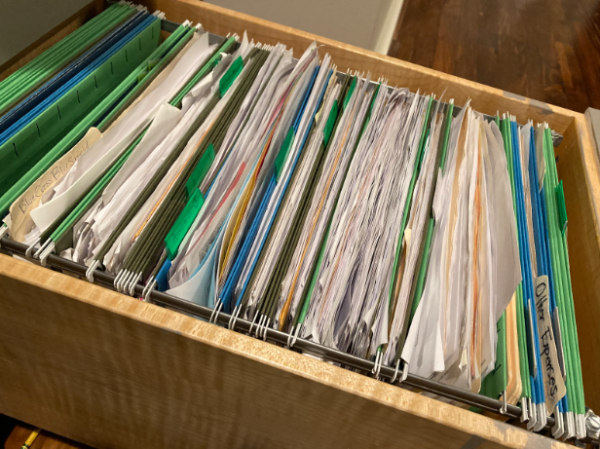Reflecting on the Importance of Diabetes’ Effects Every Month
Diabetes affects the vast majority of Americans as an invisible threat, with 30.3 million being newly diagnosed every year. Closer to home, diabetes not only affects the lives of students and staff, but is also studied and discussed in the ever-growing Anatomy Club at Chamblee Charter High School, led by co-presidents Carson Crochet and Viviana Austin-Knab.
“There are two types of diabetes, one is hereditary and one is caused by having a lot of fat so your body can’t make enough insulin,” Crochet said. “There are many different forms of treatment, such as getting insulin injections.”
Diabetes has more recently begun to affect more and more people because of factors such as weight gain and genetics. Almost anyone can contract one of the two types of diabetes.
“It affects a lot of different ages, and once you get it, you’ve got it for life,” Austin-Knab said. “It really messes with your blood sugar so it gets really high, so you can’t eat everything you want to and you can only eat at certain times.”
Overall, 29.1 million people across all age groups in the United States have diabetes, and 8.1 million may be undiagnosed and unaware of their condition. With so many suffering from its effects, it is very common to know someone with diabetes.
“My brother’s best friend in elementary school had diabetes, and he would have to always carry around a little book that told him what foods had carbs in them, and stuff like that,” Crochet said. “Whenever we took him out to eat we’d have to ask him all these questions and look through a menu before even deciding where to go. He got a phone very early so his mom could text him to take his insulin.”
Having diabetes can put a lot of strain on those who have it, both physically and mentally. Coach Lorri Reynolds teaches in-depth studies of nutrition and diabetes in her health classes.
“Because of our society’s love of fast food and large fast food diet, it’s causing our people to be overweight and have a lot of fat,” Reynolds said. “[Diabetes patients] could get their legs amputated or their sores could not heal because diabetes interrupts your body’s ability to heal itself.”
Diabetes not only weakens the body and causes it to function much less efficiently, but it also adds additional costs to already struggling families.
“It’s really expensive to be diabetic,” Reynolds said. “The medications can be $100 or $200 dollars a month, but thankfully type 2 (diabetes) can be reversed just by diet and exercise.”
Reynolds knows a great deal about the effects and treatments of diabetes patients and puts it into perspective for many of her students.
“I show a movie in my class when we’re discussing nutrition called Food Inc. where a family that has a father on diabetic medication,” Reynolds said. “Even despite the costs of his medication, he’s still driving his kids through fast food restaurants every night because he can feed his family of four at a burger place, whereas if he goes to buy fresh broccoli, it’s much more expensive.”
With a disease like diabetes, studying it makes you realize its complexity and how difficult dealing with it is. The life of someone with diabetes becomes much more about avoiding sugar, a complete lifestyle change.
“If you are insulin dependent, you would have to have something like an insulin pump on you all the time, while also being extremely careful about what you do and eat,” Reynolds said. “[The insulin pumps] regulate and read your blood sugar levels so when you need insulin they just automatically administer it.”
Thankfully, there are many teachers like Reynolds who stress the importance of nutrition and exercise to their students daily.
“I tell my kids when we’re talking about this [diabetes], do you pay now or pay later?” Reynolds said. “Do you pay now for good foods, or later to be medicated?”
Diabetes also affects the average student during the school day, making normal activities such as eating lunch a struggle.
“If you’re a student at school you would probably have to go to the nurse [to take insulin],” Austin-Knab said. “You can’t really just take blood in the middle of class, but some kids have things that monitor their blood sugar that sometimes can go off in the classroom.”
Daily treatment, as well as diet and exercise regulation, are some of the only ways to make sure patients with diabetes are healthy and stable.
“I know that doctors are coming up with many new ways to treat it because there is no cure for [diabetes],” Austin-Knab said. “For prediabetes and the non-hereditary types, there is a lot of treatment for getting on track and managing your life with the disease.”
Social studies teacher Robin Mask-Bareford is a diabetic who isn’t ashamed of her disease and tends to be very open with all it entails.
“I have type 2, but because of my medication I tend to react like I have type 1 to many situations,” Mask-Bareford said. “Because of this I struggle with having too little insulin or too much, and because of my other conditions it becomes a little more serious as if I was someone with type 1.”
Mask-Bareford knows a great deal about diabetes, from her own experience and the experiences of those in her family.
“Pretty much everyone in my family has diabetes, from my dad to my grandparents to the rest of my biological father’s side,” Mask-Bareford said. “Just because of genetics I started getting checked out at age ten and then every year on from that, just waiting to be diagnosed.”
In her lifetime, the technology of treating diabetes has improved drastically with cheaper machinery and new treatment plans.
“I feel very lucky about the position I’m in [with diabetes],” Mask-Bareford said. “There are some people who have to be monitored every night when they sleep, but since technology has really improved, it’s become a lot easier for me to live with.”
A lot of these improvements have been greatly supported by many projects and organizations such as the Diabetes Association of America and our own Anatomy Club. Anyone can help by participating in walks, donating money, or simply raising awareness.
“Every month when we bring awareness to a disease [in Anatomy Club] and last November we put up posters and ended up receiving a large donation,” Crochet said. “Part of the donation was sent to the Diabetes Association of America.”
The Anatomy Club at CCHS is not hesitant when it comes to getting involved. Last November was extremely important to the students and many patients struggling.
“During Diabetes Awareness Month last year we participated in a walk at Turner Field,” Austin-Knab said. “We helped pass out water and managed the food that we passed out, it’s basically our way of giving back.”
The life of a diabetes patient is just like any other, and despite the hardship the disease may bring, the strength of those suffering is evident and should be recognized.
“Diabetes has just become a part of my life. Sometimes you have to think about it, but most of the time it’s just taking your insulin every day, taking your pills, checking your blood sugar and you don’t even think about it,” Mask-Bareford said. “I really just think it is what it is.”
Your donation will support the student journalists of Chamblee High School Blue & Gold. Your contribution will allow us to print editions of our work and cover our annual website hosting costs. Currently, we are working to fund a Halloween satire edition.

Aves Lewis is the Editor in Chief of The Blue & Gold. Outside of journalism, you can find them reading anything by Alice Oseman, drinking copious amounts of tea, and waking up at two a.m. to write down an idea for an article. This is their third year on the staff.






